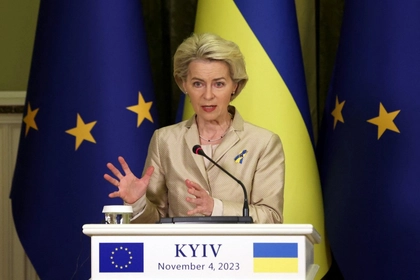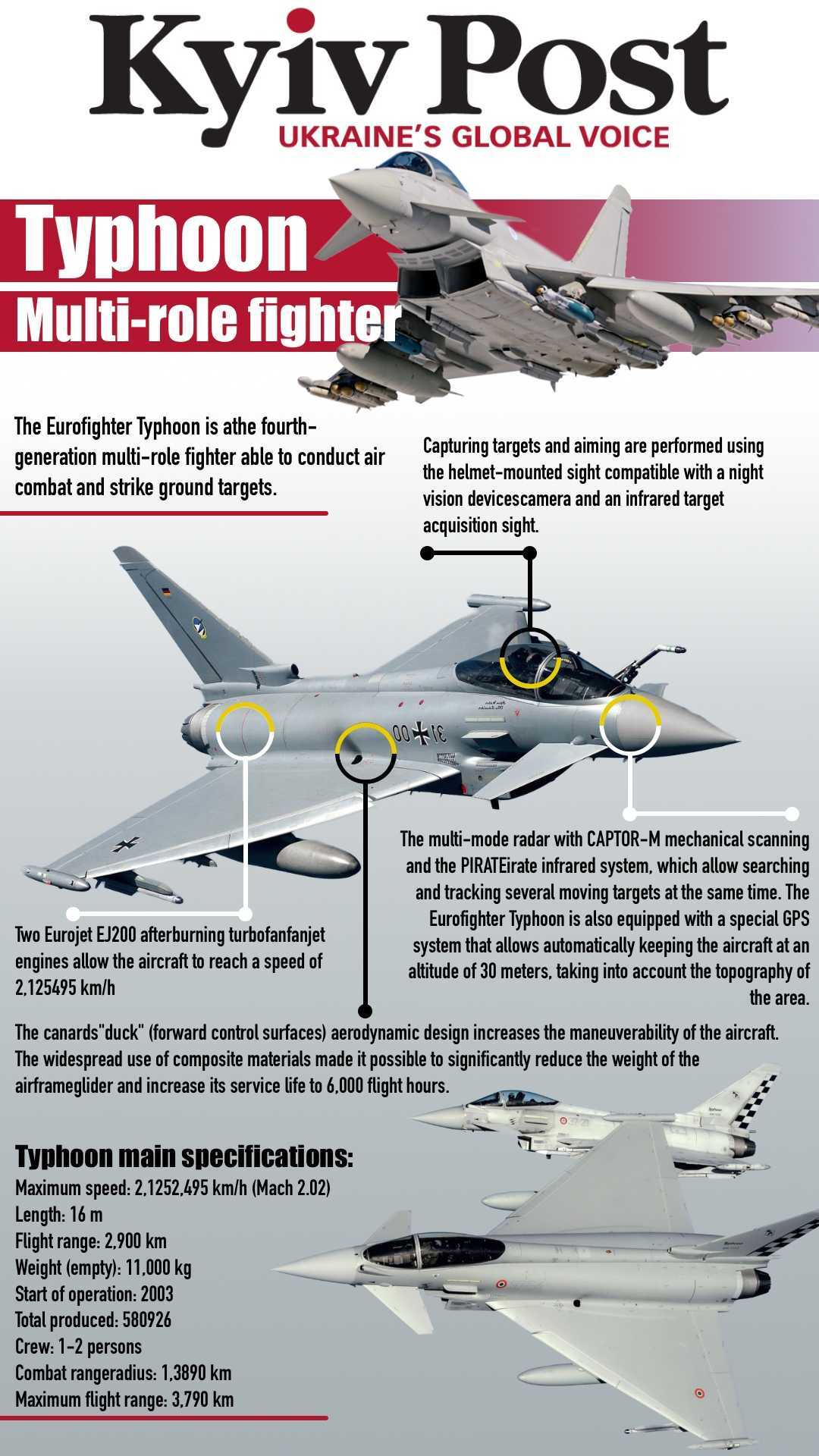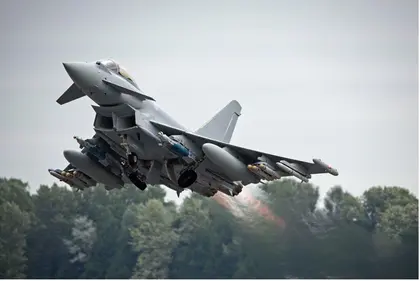Thanks to its successful negotiations with western partners, Ukraine is currently receiving many of the advanced weapons it needs to resist the enemy, including modern armored vehicles and long-range artillery. Ukraine sees an obvious gap in its inventory; fourth-generation fighter jets.
To date the focus has been on the American F-16 “Fighting Falcon”, an aircraft that is used by, not only the U.S., but also by many NATO partners. Currently Ukrainian pilots are being trained and assessed on their ability to fly the F-16 on simulators in the United States. In spite of the U.S. President Joe Biden having stated that the U.S. would not supply the fighters many believe that, the training of pilots on the aircraft, signals the possibility that Ukraine will get them in the future.
JOIN US ON TELEGRAM
Follow our coverage of the war on the @Kyivpost_official.
In his meeting with President Zelensky on Feb. 8, the UK Prime Minister Rishi Sunak announced an intention for the Royal Air Force to train Ukrainian pilots to fly the combat aircraft of NATO countries. On Feb. 23, the former UK Prime Minister Boris Johnson issued a statement saying that the UK should send some of its Typhoon fighter jets to Ukraine.
The Eurofighter Typhoon
This aircraft is a fourth-generation, all-weather, multi-role twin-engine, fighter. Work on the program effectively began in 1983 as a development of the Future European Aircraft program (EAP). It was a multinational collaboration between the UK, Germany, France, Italy and Spain and was intended to replace the third-generation “Tornado”.

EU Transfers €1.5 Bln Raised From Russian Assets for Ukraine
Following a series of technical disagreements, France withdrew from the project in 1985 to focus on development of its own Dassault Rafale aircraft.
In spite of the first Eurofighter prototypes flying in 1994 and the first contracts for serial production in 1998, the aircraft only came into service in 2003 and was first used on combat duty in 2005.
The Eurofighter Typhoon is now in service in all manufacturing countries as well as in Austria, Saudi Arabia, Kuwait, Qatar, and Oman.
Initially, created as an agile fighter to combat enemy aircraft and missiles. However, in-service modifications enable the aircraft to be equipped with a large range of armaments that also give it a ground attack and suppression of air defense (SEAD) capability.
The Aircraft Design
The Typhoon is a highly agile aircraft both at supersonic and at low speeds. It is capable of achieving a flight speed of Mach 1.5 which puts it on a par with many, so-called fifth generation aircraft. Its fly-by-wire control system is designed both to compensate for inherent instability and to prevent the pilot from exceeding the permitted maneuver envelope.
The Typhoon features lightweight construction from composite materials that give an estimated lifespan of 6,000 flying hours. It requires a relatively short runway, 700 meters, and can use unprepared airstrips in wartime or in emergency situations.
Although not designated as a stealth fighter, measures were taken to reduce the Typhoon's radar cross section (RCS): jet inlets conceal the front of the engines, external weapons are mounted semi-recessed into the aircraft, radar-absorbent materials (RAM) coat many of the most significant reflectors, such as the wing leading edges, intake edges and interior.
On-board electronics
Eurofighter instrumentation is fully digital. It combines advanced electronics showing all data on three display screens matched to the pilot’s “heads-up” helmet-mounted display and sights. The aircraft also has a unique “direct voice input” allowing the pilot to perform various operations using voice commands alone.

Countering Anti-Aircraft Systems
The Eurofighter Typhoon is also equipped with a special GPS guidance system for “nap of the earth” flying which automatically maintains an altitude of 30 meters, taking into account the topography of the area. The ability to fly at such a low altitude, combined with anti-heat seeking decoy flares, reduces the enemy's ability to detect and intercept the aircraft with anti-aircraft missiles.
Eurofighter armament
Eurofighter is able to carry up to 9,000 kg of a range of weapons, including conventional and high-precision guided bombs and long-range cruise missiles. The weaponry it can carry short-range anti-tank missiles and anti-radar weapons, including Brimstone and AGM-88 HARM, both of which have already been supplied to the Armed Forces of Ukraine. In addition, it can be equipped with Meteor air-to-air missiles, which can engage out of sight aerial targets beyond visual visibility. It also carries a 27-mm automatic cannon with a rate of fire of 1,700 rounds per minute.
Although the use of Eurofighter Typhoon on combat operations has been limited it is considered to be technically one of the most capable fourth-generation jet fighters. Because of the in-life improvements and modifications that have been made to Eurofighter, many consider it to occupy an intermediate place between fourth and fifth generations.
This aircraft is truly multi-role and can act as a fighter, bomber, attack and surveillance aircraft able to carry the complete range of NATO aircraft weapons
The Eurofighter and Ukraine
Almost 650 Eurofighters are in service in both Europe and the Middle East. As a number of its European users are in the process of replacing many of their Typhoons with fifth generation aircraft, the resulting surplus could be provided to Ukraine if the political decision to do so was made.
Feedback from those being trained on F-16 indicates that Ukrainian pilots could quickly adapt to flying the Eurofighter.
Typhoon significantly outmatches current Russian aircraft and would increase Ukraine’s ability to defend against cruise missiles and aircraft and finally give us the air superiority that many consider to be essential to victory. That combined with the availability of repair and logistics bases in nearby countries and being able to easily source spare parts and components and being able to repair the aircraft on site provides a further distinct advantage.
You can also highlight the text and press Ctrl + Enter






